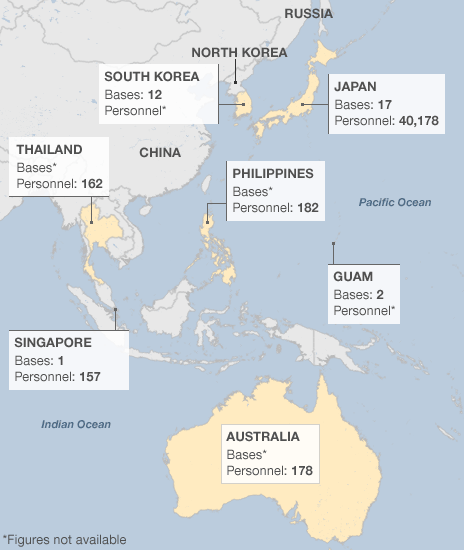The Obama administration will soon announce the details of a new agreement with Japan for U.S. troops and military bases on the island of Okinawa following a White House meeting with the Japanese prime minister next week.
In 2006, the U.S. and Japan agreed to transfer 8,000 U.S. Marines from Okinawa to the island of Guam and to relocate the Futenma Air Station to another part of Okinawa. The plan stalled for years due to resistance from Okinawans who would not agree to the new location of the airbase.
Approximately 40,000 U.S. troops occupy the various military bases in Japan, about three-quarters of which are located on the islands of Okinawa. The occupation has been a source of considerable tension over the decades since WWII, and the populace has protested the troop presence consistently.
“Most Okinawans devoutly desire that these unwelcome, seemingly permanent American occupiers would get out,” writes economist Robert Higgs. “[T]he American military personnel on Okinawa since 1945 have made themselves a chronic nuisance to the local populace, perpetrating crimes that range from automobile-related incidents, such as hit and run, to assaults and rapes. U.S. aircraft sometimes crash into civilian areas.”
The 2006 plan was stalled also due to resistance from the people of Guam. “U.S. military base expansion in Guam,” Brown University Professor Catherine Lutz said, “has faced much local resistance including lawsuits and protests largely because of land taking, disruption of sacred sites and concerns about environmental damage.”
The details of the plan have not been released yet, but there are reports that it will include halving the number of troops headed to Guam and spreading the rest across Australia, Hawaii, and the Philippines.
Washington’s renewed focus on Asia is part of the Obama administration’s ‘strategic pivot’ to the surge America’s military and naval presence in Pacific region in a misguided effort to contain China’s rising influence. This includes not only Japan and Guam, but South Korea, the Philippines, Singapore, Australia, et al. This is likely to get done over the objections of the indigenous people in these countries, as it has in the past.



